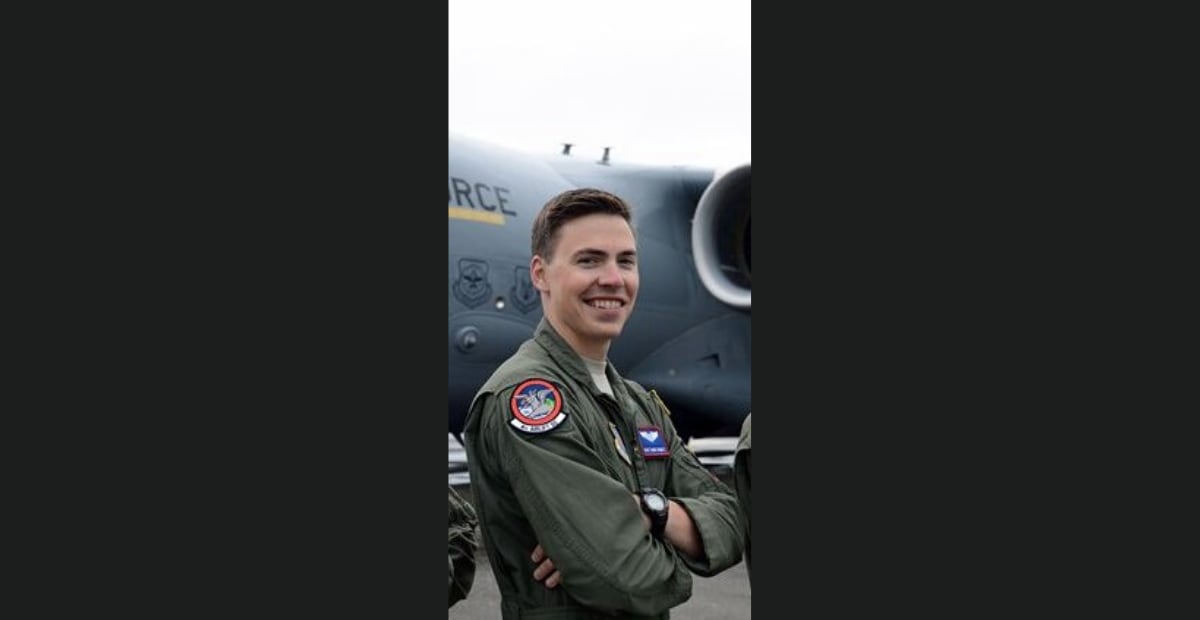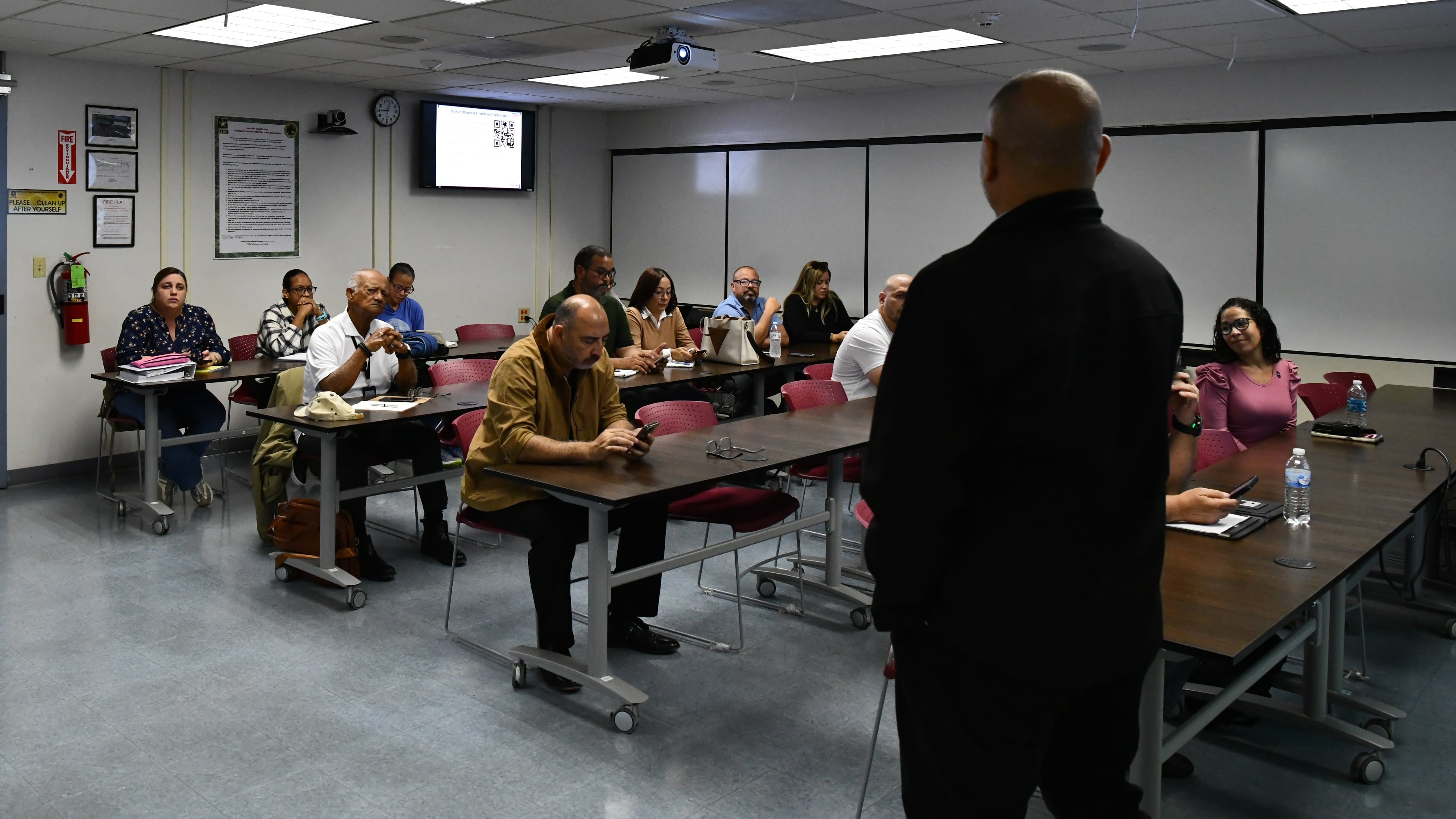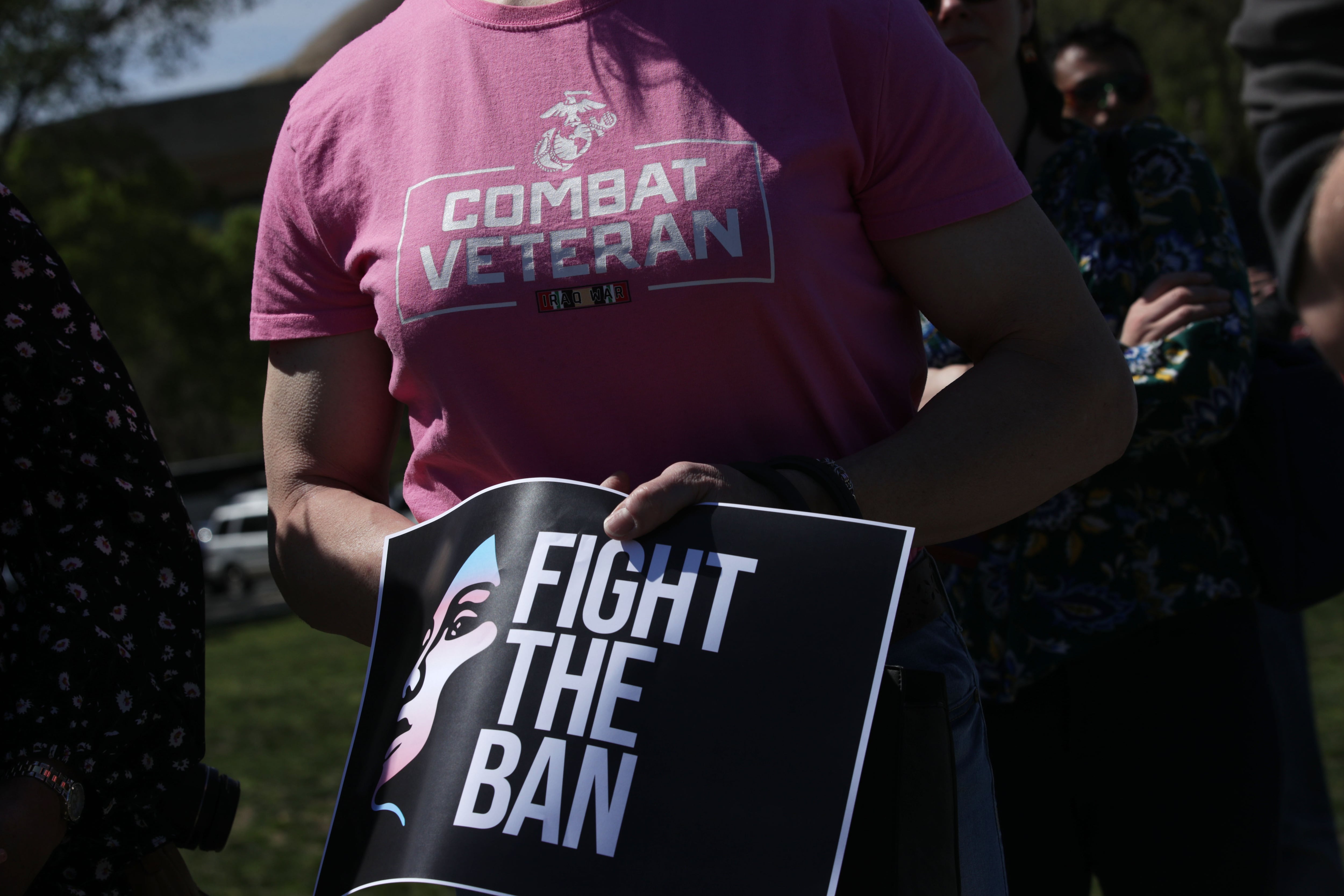A cascading series of pilot errors, leadership failures and ejection seat malfunctions combined to cause the fatal crash of an F-16CM Fighting Falcon pilot on a nighttime training flight at Shaw Air Force Base in South Carolina June 30, according to an investigation released Monday.
The report found that 1st Lt. David Schmitz, who became frustrated after being unable to carry out his first-ever aerial refueling and had to cut his nighttime training flight short, accidentally severely damaged his landing gear during a landing attempt, which was the primary cause of the crash, according to the report, dated Oct. 16.
But the report said that the supervisor of flying substantially contributed to Schmitz’s death by opting not to call a Lockheed Martin hotline that could have advised on a safer course of action, and instead having him try to conduct a cable landing instead of a controlled ejection, the report said.
A series of ejection seat malfunctions kept Schmitz’s parachute from deploying, also contributing to his death, the report said.
And the report criticized Schmitz’s leaders for having him try for his first-ever aerial refueling at night, disregarding Air Force policies that require pilots to first get used to such maneuvers in the daytime.
“This accident is a tragic reminder of the inherent risks of fighter aviation and our critical oversight responsibilities required for successful execution,” Air Combat Command head Gen. Mark Kelly said in a Monday release.
ACC spokeswoman Leah Garton declined to comment on any possible disciplinary actions against airmen as a result of this mishap, citing privacy concerns.
Garton also said it is too soon to say what possible changes to policies and procedures might come as a result of this report.
However, she said, “ACC is committed to preventing a similar incident from occurring in the future. The purpose of the Accident Investigation Board report is to provide us with the information we need to understand the cause of an accident, and therefore enact changes to prevent future accidents.”
Schmitz, 32, of the 77th Fighter Squadron at Shaw’s 20th Fighter Wing, was taking part in a four-ship mission qualification training flight the night of June 30 to practice suppressing enemy air defenses, with an aerial refueling beforehand from a KC-135 Stratotanker. It was to be Schmitz’s first air-to-air refueling and first simulated enemy air defense suppression sortie.
Schmitz received his pilot’s license when he was 17 years old, and first enlisted in the Air Force and served as a C-17 loadmaster, Col. Larry Sullivan, commander of the 20th Fighter Wing, said in July after Schmitz’s death.
He received his commission through Officer Training School, and graduated at the top of his class, Sullivan said.
Schmitz "loved his family. He loved his country. And he loved to fly,” Sullivan said.
The fighters took off at about 9 p.m. and flew about 110 nautical miles southwest of Shaw to the Bulldog Military Operating Area, where they were to refuel. The clouds were thick, and the refueling was delayed while the KC-135 moved to a different altitude.
The two instructors on the flight had no problem refueling, and the third pilot had some trouble, but was able to receive some fuel. But Schmitz was unable to “meet the intense formation requirements to receive fuel,” the report said.
Schmitz was running out of fuel, so he and his instructor had to scrap the rest of their flight and return to Shaw early. He was heard expressing frustration after the unsuccessful refueling attempt, and again on his way back to Shaw, the report said, and struggled to maintain the proper formation spacing and airspeed while following the instructor.
The report said the instructor tried to make a lighthearted remark and ease Schmitz by saying, sincerely, “That was really challenging.” Schmitz exhaled and said, “No excuse.”
Schmitz lowered his landing gear and began an approach at about 10:26 p.m., but his F-16 struck the localizer antenna array that was located a little more than 1,000 feet before of the runway threshold. The strike severely damaged his left main landing gear and scattered debris. The wheel was twisted perpendicular, the hydraulic lines were split, and the left drag brace’s front mount was severed and left hanging.
RELATED

He briefly touched down in the underrun, staying on the ground for about 330 feet, but broke off the landing to try again and lifted back off about 470 feet before the runway began.
Schmitz now had about half an hour of fuel remaining, as his instructor flew over and took a look at the damage. For more than 20 minutes, Schmitz, his instructor and the supervisor of flying discussed how to handle the landing.
The supervisor of flying serves as the “focal point for command and control of flight operations,” the report said. That individual makes sure that recovery plans for in-flight emergencies and weather-related changes reflect sound airmanship and that crews stick to established guidelines and don’t take unnecessary risks.
The supervisor of flying began running through a checklist for procedures for landing with the gear unsafe or up, the report said, though Schmitz questioned whether that was the right checklist. Because his landing gear was damaged and would likely be difficult to control in a normal landing, the supervisor decided the best course of action would be to try for a cable landing at the beginning of the runway.
However, the supervisor of flying didn’t call the Lockheed Martin technical assistance line to confirm that was the right checklist, the report said. Lockheed Martin’s flight safety engineers later told investigators that checklist only applies if a landing gear fails to extend normally, not when it is damaged or hanging.
In fact, the report said, there is no checklist in the F-16CM flight manual for the situation Schmitz found himself in, and Lockheed’s engineers couldn’t predict the outcome of trying for a cable landing in that situation. In two previous cases with similarly-damaged landing gear, the engineers told investigators, both pilots ejected instead of trying a cable landing.
When Schmitz tried a cable landing at about 10:50 p.m., the tailhook did not catch the cable, the report said. Investigators later found that marks on the hook showed it made contact with the cable, but didn’t hit it squarely.
And because the left main landing gear was damaged, the fighter rolled to the left and its wing fell to the runway, dragging the plane to the left.
Schmitz then ejected, but the seat malfunctioned and his parachute never deployed. He hit the ground while still in his seat, and died instantly, the report said. The $25 million fighter veered off the runway into the grass infield to the left, flipped nose-over-tail, and was destroyed.
The primary cause of the crash was Schmitz’s failure to correctly interpret the approach lighting system and identify the runway threshold during his first landing attempt, which ended up severely damaging his landing gear.
Two other factors substantially contributed to his death, the report said: The fact that the supervisor of flying did not call Lockheed Martin’s hotline to consult with experts on the safest course of action, and the malfunctioning ejection seat.
The report said investigators concluded a lack of available parts delayed the installation of a fix in the F-16′s Advanced Concept Ejection Seat, or ACES II, that was designed to prevent the kind of problem that caused the parachute to fail to deploy in time.
Schmitz was a distinguished graduate from undergraduate pilot training, and had earned the Top Gun Award during Introduction to Fighter Fundamentals, the report said. He was lauded for his work ethic during initial qualification training in the F-16 and was rated as “slightly above average” during his mission qualification training program. He had 97.5 flight hours in the F-16 at the time of the mishap, and had previously flown 12 night flights.
But Schmitz had never conducted an air-to-air refueling before, even in daytime. And, the report said, Air Force rules require mission qualification training students to not conduct events like air-to-air refueling at night until they have shown they are proficient at it during the day, unless they are flying in a two-seater aircraft with an experienced instructor pilot who could take over if something went wrong.
Other human factors that contributed to the mishap, the report said, included distraction, as shown by Schmitz’s evident frustration after the refueling attempt didn’t work.
And the report said the supervisory and command oversight was inadequate by having Schmitz try to carry out his first aerial refueling at night.
In his statement, Kelly said a series of “key execution anomalies and material failures” resulted in the crash that killed Schmitz, such as the requirement for pilots to be proficient on maneuvers in the daytime before trying at night.
“That didn’t occur for this officer,” Kelly said. "And when we have oversight breakdowns or failures of critical egress systems, it is imperative that we fully understand what transpired, meticulously evaluate risk, and ensure timely and effective mitigations are in place to reduce or eliminate future mishaps.”
Stephen Losey is the air warfare reporter for Defense News. He previously covered leadership and personnel issues at Air Force Times, and the Pentagon, special operations and air warfare at Military.com. He has traveled to the Middle East to cover U.S. Air Force operations.





